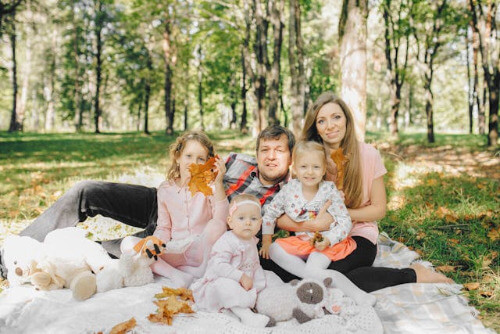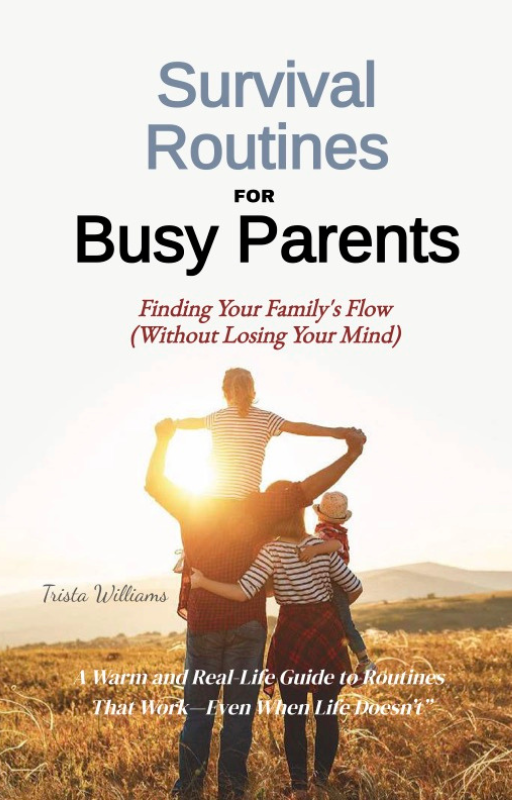Parenting with Love: A Gentle Guide for Real-Life Families
If you’re here, I’m guessing you’re trying to raise your kids with kindness, patience, and heart… but you might also be feeling a little unsure of what “parenting with love” actually means.
Let’s break it down together, in plain, non-judgy language.

What Does Parenting with Love Mean?
Parenting with love is raising children in a safe environment where they feel valued and respected. It’s not about saying “yes” to everything. It’s about balancing warmth and affection with guidance and boundaries.
Think of it this way:
- Love is the foundation. Your child knows your love is unconditional.
- Respect is the language. You may not agree, but you listen to their feelings.
- Boundaries are the structure. Kids thrive when they know where the “edges” are.
Using this approach with your child helps them to recognize that kids are people with real emotions. Instead of controlling through fear or punishment, parenting with love focuses on connection, teaching, and empathy.
How Parenting with Love Compares to Gentle Parenting
Gentle parenting has been a big buzzword in the last few years, and it has a lot in common with parenting with love. Both approaches emphasize respect, empathy, and avoiding harsh punishments. But there are subtle differences.
- Gentle Parenting: Often focuses on emotional awareness, validating feelings, and modeling calm behavior. For example, instead of yelling when your child throws a tantrum, you might say, “I see you’re upset. Let’s take a breath together.”
- Parenting with Love: While similar, it places extra emphasis on the balance between affection and boundaries. It’s not permissive parenting (where kids do what they want). It says, “I love you enough to set limits, even when it’s hard.”
In short: gentle parenting leans heavily on empathy and communication, while parenting with love keeps love and discipline hand-in-hand.
How Parenting with Love Compares to Positive Parenting
Positive parenting is another popular approach, and again, there’s overlap. Instead of using punishment, both methods focus on using encouragement and building strong relationships. But here’s the key difference:
- Positive Parenting: Often structured around techniques like praising effort, redirecting behavior, and setting clear expectations. It’s almost like a parenting toolkit.
- Parenting with Love: Less about a specific set of techniques and more about a philosophy. The “why” behind your parenting decisions is love — and from that place, you choose tools that respect your child.
For example:
- A positive parenting response to a messy room might be: “I see you picked up your toys, great job! Let’s work together on the clothes now.”
- A parenting with love response might sound like: “I know cleaning isn’t fun, but part of our family is helping each other. Let’s do it together.”
Positive parenting emphasizes reinforcement. Parenting with love emphasizes connection. These 2 types of parenting are very similar and you might want to consider using them together.

Why Parenting with Love Matters
Parenting can sometimes be exhausting and even downright overwhelming. You’ll lose your patience some days. You’ll raise your voice. (We all do.) Parenting with love isn’t about never messing up.
Research shows that children raised with warmth and consistent boundaries tend to:
- Develop better emotional regulation
- Have stronger self-esteem
- Form healthier relationships later in life
But beyond the research, it just feels better. Kids who know they’re loved unconditionally don’t have to earn their parents’ approval through perfection — and that’s a powerful gift.
Practical Examples of Parenting with Love
Okay, let’s make this real. What does parenting with love actually look like in daily life?
1. During a Tantrum
Instead of: “Stop crying right now or you’ll get a time-out!”
Try: “I see you’re upset. I’m here with you. When you’re ready, we can talk about what happened.”
This tells your child you’re not rejecting their feelings, even if you won’t accept the behavior (like hitting or screaming).
2. Setting Boundaries
Instead of: “Fine, eat cookies for dinner, I give up.”
Try: “I know you want cookies, but we’re having dinner first. After we eat, we can have dessert.”
3. Teaching Responsibility
Instead of: “You forgot your homework again! Why can’t you be responsible?”
Try: “I see you forgot your homework. That must feel frustrating. What can we do together to help you remember next time?”
This builds problem-solving skills without shaming.
4. Everyday Connection
Love also shows up in the little things — morning hugs, listening without interrupting, putting down your phone when your child wants to tell you something “silly.”
Common Concerns Parents Have
“But won’t kids walk all over me if I parent this way?”
Not if you’re clear with boundaries. Parenting with love is not permissive parenting. Kids need rules — they just don’t need them delivered harshly.

“What if I lose my cool?”
You’re human. You will. The magic of parenting with love is repair. Apologizing, reconnecting, and moving forward teaches kids how to handle mistakes too.
“My parents didn’t raise me this way. Is it too late to change?”
It’s never too late. Making the smallest shifts in your love and empathy toward your kids will change your relationship with them.
Bringing It All Together
Here’s the thing: I’ve said it many times before, there is no “perfect” way to parent. Parenting with love, gentle parenting, positive parenting — they’re all tools pointing in the same direction: raising kind, capable kids who feel safe and loved.
The question isn’t which method is the “right” one? Instead ask: How can I bring more connection and love into my parenting today?
Start small. Offer more hugs. Listen a little longer. Set boundaries calmly but firmly. A little change at a time can go a long way with kids.






















New! Comments
Have your say about what you just read! Leave me a comment in the box below.